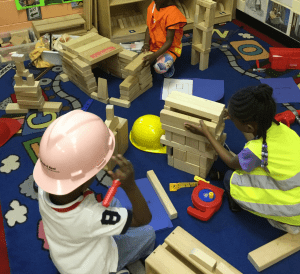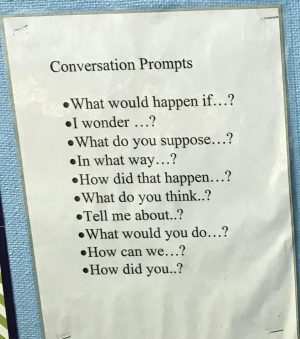Developmentally Appropriate Practice

NAEYC DAP
- DAP: Defining Developmentally Appropriate Practice (NAEYC Webpage)
- 3 Core Considerations of DAP (NAEYC Webpage)
- 10 Effective DAP Teaching Strategies (NAEYC Webpage)
- 20 Questions for Teachers: A DAP Checklist (NAEYC Webpage)
- DAP with Preschoolers (NAEYC Webpage)
- Developmentally Appropriate Practice in Early Childhood Programs Serving Children from Birth through Age 8 (NAEYC Position Statement)
- Explaining Developmentally Appropriate Practice to Families (Article)
- North Carolina Early Learning and Development Progressions-Birth to Five
- Mastery Motivation: Persistence and Problem Solving in Preschool (Article)
- Whatever Happened To Developmentally Appropriate Practice in Early Literacy? (Article)
Authentic Feedback
- “Good Job” Alternatives (NAEYC Webpage)
- Giving Children Authentic and Specific Praise and Feedback (Webpage)
- 25 Alternatives to “Good Job” (Article)
- Behavior-Specific Praise in the Classroom (Article)
- Encouragement is More Effective Than Praise in Guiding Children’s Behavior (Article)
- Encouragement vs Praise for Teachers (Article)
Classroom Setup Resources

Curriculum and Instruction
- Calendar Time for Young Children: Good Intentions Gone Awry (NAEYC Webpage)
- Bring the World to Your Classroom (UNC-TV and PBS)
- Helping Others Understand Academic Rigor in Teachers’ Developmentally Appropriate Practices) (Webpage- NAEYC)
Arts
- The art of creating: Why art is important for early childhood development (Webpage MSU)
- Benefits of the Arts in Early Childhood Development (Webpage -ECC Jamaica)
- Creative Art Helps Children Develop across Many Domains (Webpage USDA Cooperative Extension)
- The Making of an Art Museum: A Preschool Project (NAEYC -Webpage)
- Look out Below (and Above)! Challenging Adult Understandings of Displaying Young Children’s Artwork (PDF Contemporary Issues in Early Childhood)
Environment
- Building Friendships in Preschool (PDF HighScope)
- Helping Children Play and Learn Together (NAEYC -Webpage)
- North Carolina Guide for the Early Years
- Play and the Learning Environment
Intentional Teaching
- Making Sense of ‘Intentional Teaching‘ (Article)
- Think before you (inter)act: What it means to be an intentional teacher (Article)
- Observing, Planning, Guiding: How an Intentional Teacher Meets Standards through Play (NAEYC Webpage)

Open-ended questions posted on teacher eye-level in the classroom.
Promoting Open-Ended Questions
- Big Questions for Young Minds: Extending Children’s Thinking (Webinar NAEYC)
- Moving Beyond Who, What, When, Where, and Why: Using Bloom’s Taxonomy Questioning to Extend Preschoolers’ Thinking (NAEYC Webpage)
- Talk, Read and Sing Together Every Day! (Article)
- How Planning and Reflection Develop Young Children’s Thinking Skills (Article)
- Conversations with Children! Questions that Spark Conversations and Deepen Understanding (NAEYC Website)
- Open-Ended Questions to Help Children Think (PDF Georgia PreK)
- How to Use Open-ended Questions in the Early Years (Webpage)